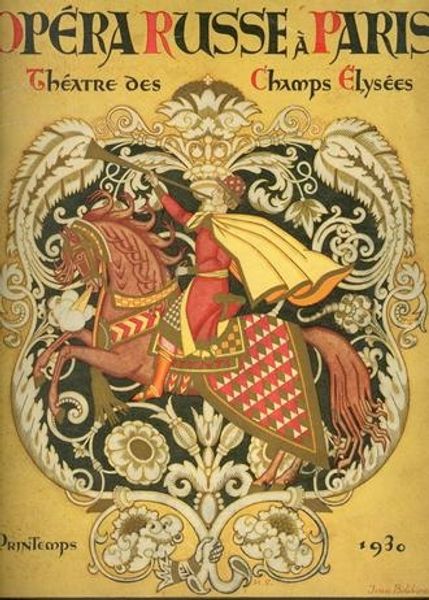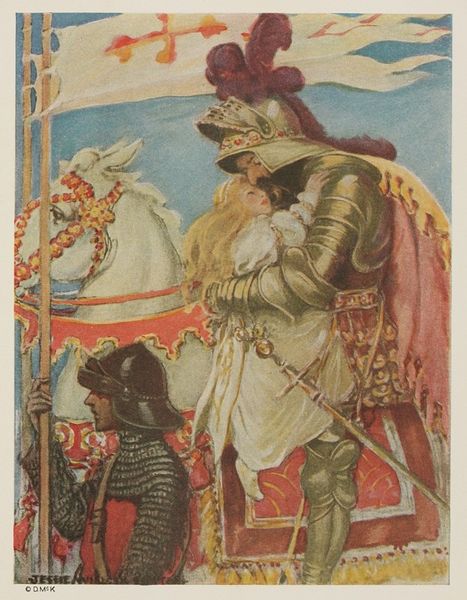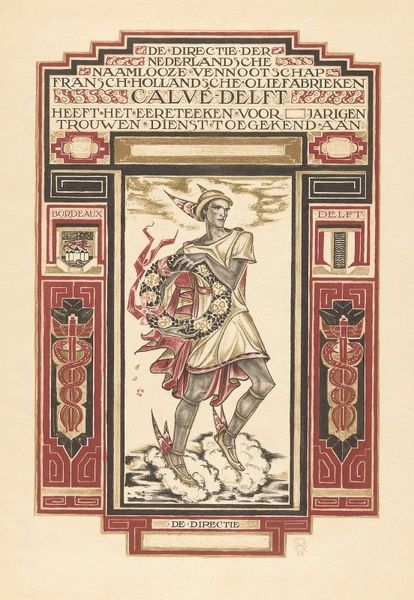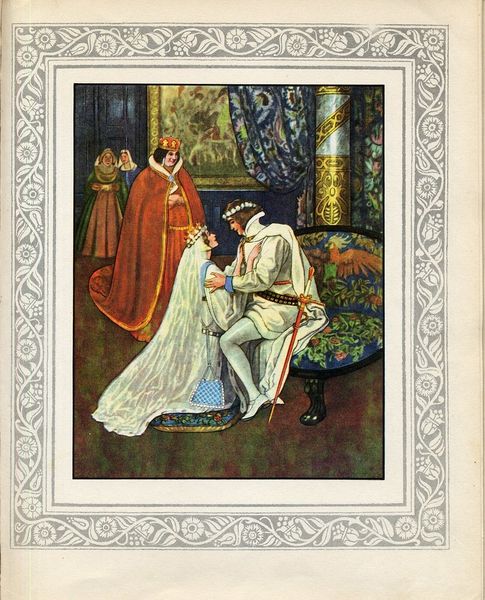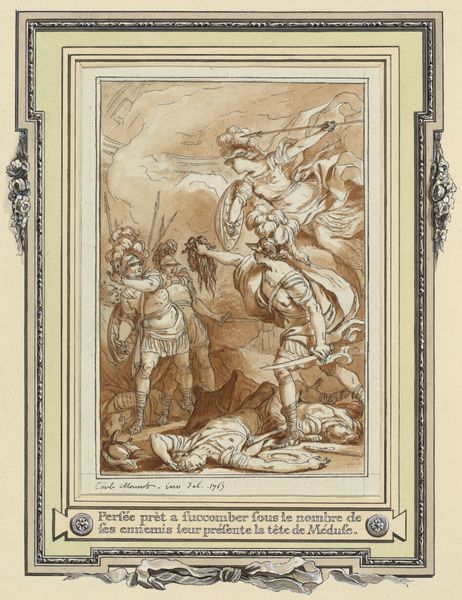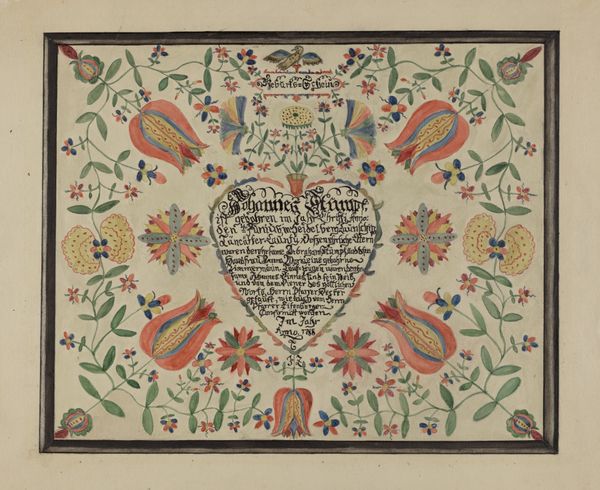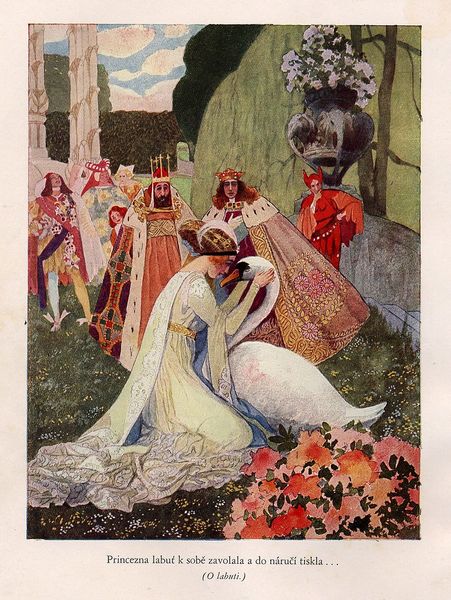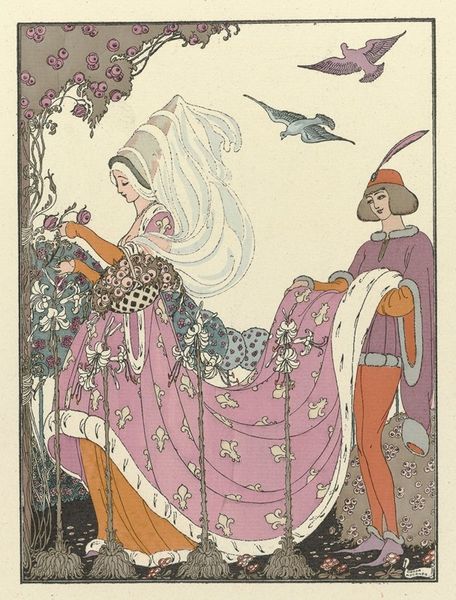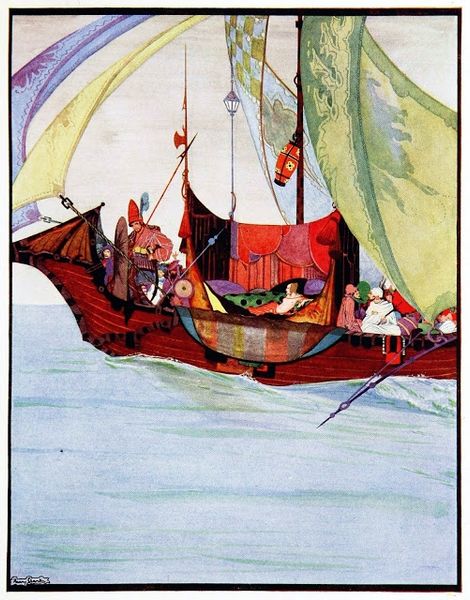
Copyright: Maxfield Parrish,Fair Use
Editor: So this is "The Knave of Hearts," a painting by Maxfield Parrish from 1925. I'm struck by how theatrical it feels. The two figures are like mirrored performers framing this elaborate mountain scene. What jumps out to you when you look at the visual structure of this work? Curator: The composition certainly arrests the eye. The bilateral symmetry established by the two figures in cook’s garb immediately proposes a structuralist reading. Note how their mirrored stance is interrupted only by the color variations on their sleeves and hose, inviting speculation on their differing, perhaps even oppositional, roles. Editor: Oppositional roles, that's interesting. The spoons they’re holding—are those significant? Curator: Indeed. Their scale is notable; they are not merely spoons but function as architectonic features, defining the pictorial space. What semiotic weight do these oversized utensils carry? Are they implements of creation, or perhaps instruments of judgment? Parrish offers no easy answers, and leaves it to the viewer to determine the structural underpinnings of this work. Editor: So, the painting sets up this very balanced, almost staged scene, but then leaves the underlying story open to our interpretation, just through the careful use of visual elements. Curator: Precisely. The symbolism emerges from the structural relations within the composition, not from any overt narrative content. Editor: I see. It's like Parrish gives us the framework, the grammar, but lets us write the story. I had only considered this in the light of fairy tale illustration, but your emphasis on composition and symbolism gives me much more to think about. Curator: It is in such tensions that we find true art.
Comments
No comments
Be the first to comment and join the conversation on the ultimate creative platform.
